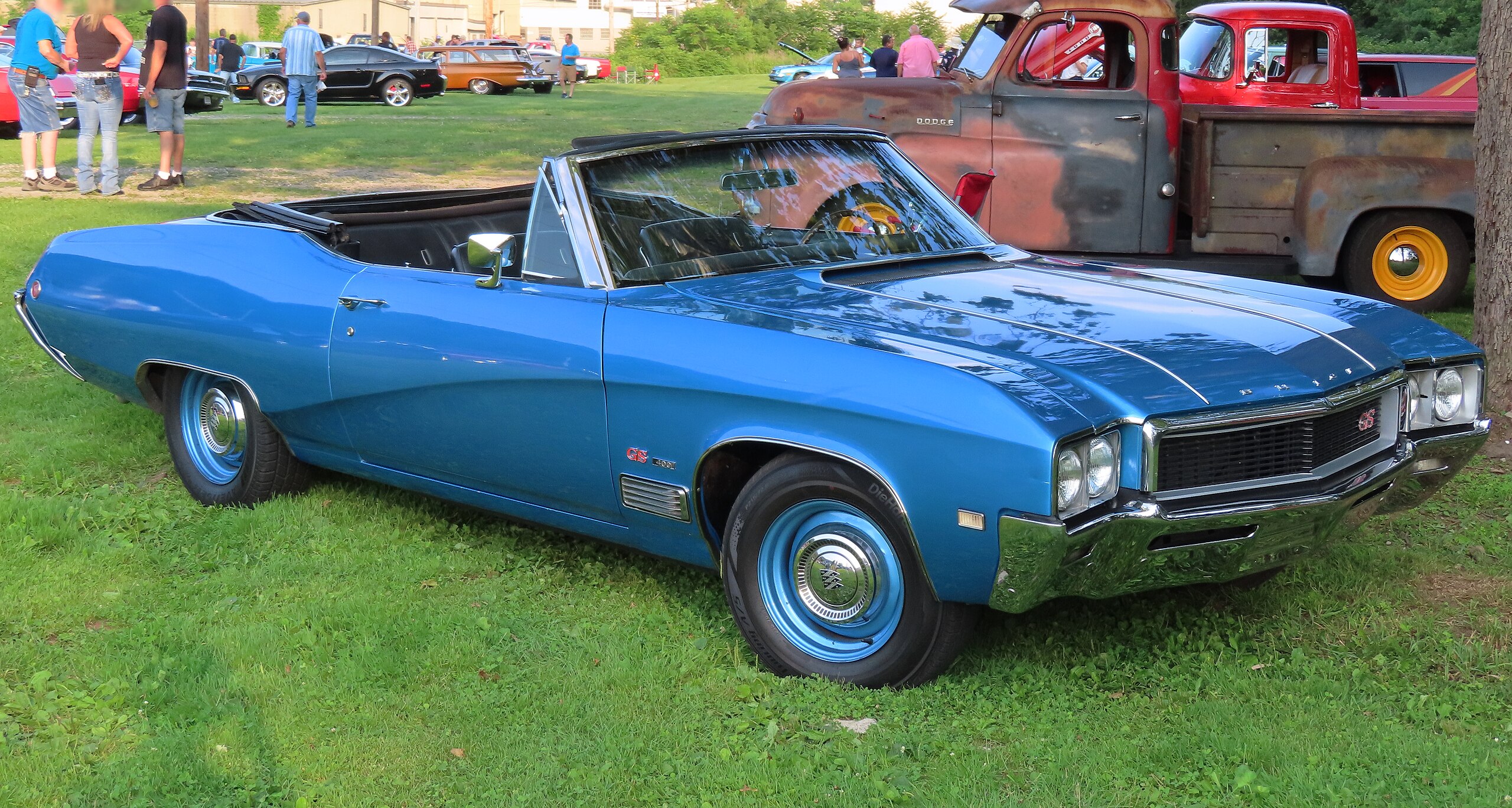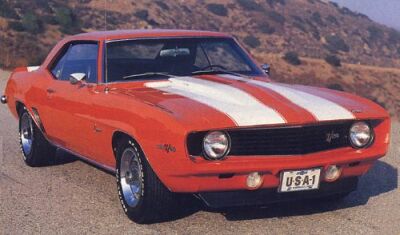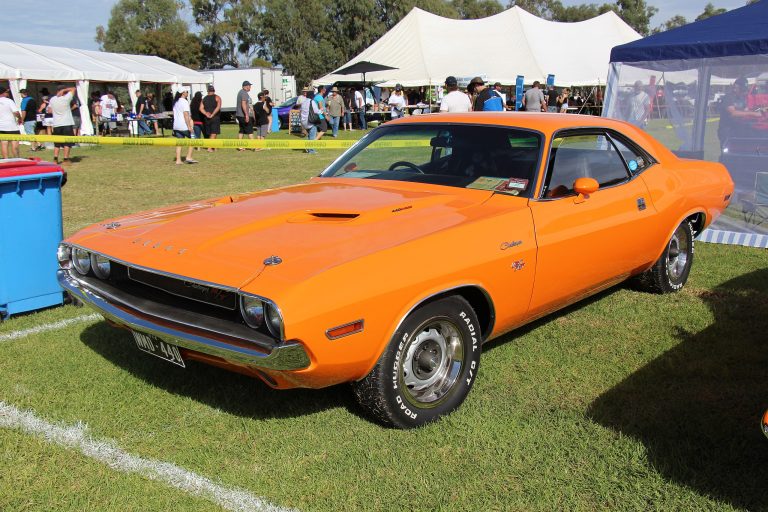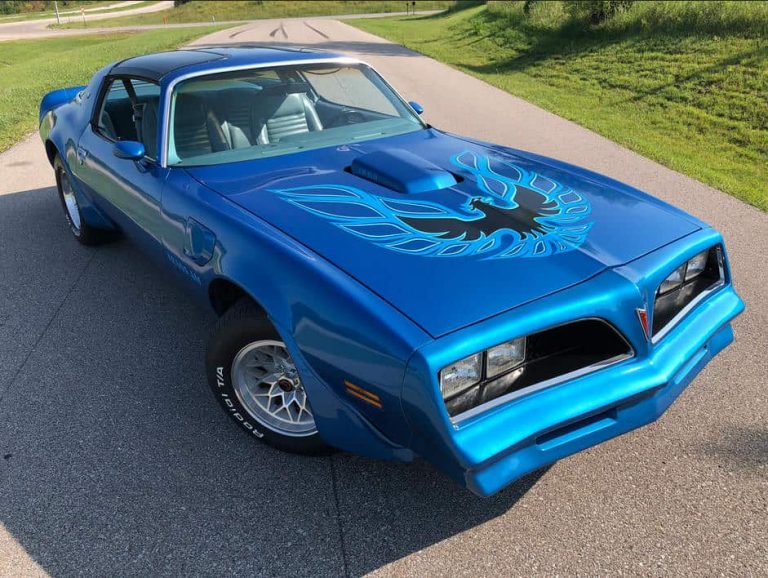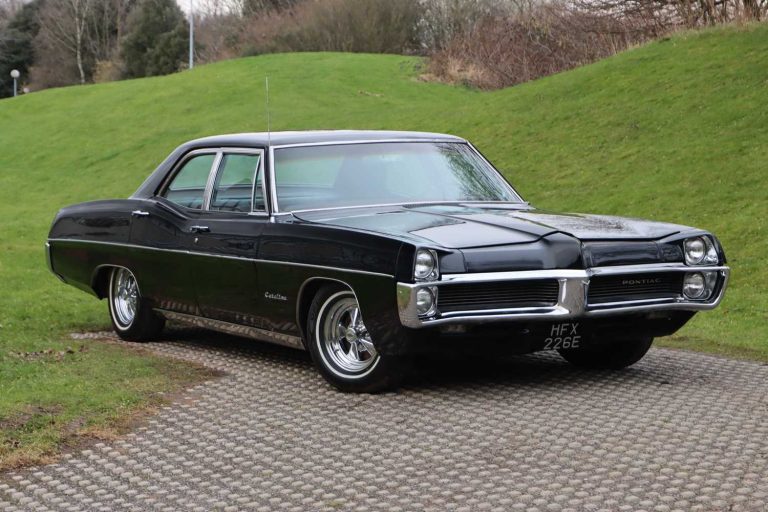Buick Gran Sport

Meet Chandler
Chandler has a bachelors and masters degree in history as well as a passion for classics and muscle cars. His education and historical knowledge makes him skilled at crafting highly detailed articles about America’s muscle cars and automotive history. His love of muscle cars is undeniable, with him seeking them out at every opportunity during his visits to auto shows and car meets. Chandler’s knowledge and enthusiasm towards automotive history make him a great asset to the Muscle Car Club community.
Though it might not have the name recognition as some of its competitors, the Buick Gran Sport — or GS — was one of the best luxury muscle cars of the 1960s and early-1970s. It started life as an option package on the Buick Skylark and Buick Riviera from 1965–1966, before becoming a stand alone model based on the Skylark from 1967–1972. Fans of the era fondly remember the GS 400 and GS 455 as some of the top big-block powered cars of the time, and the 1970–1972 Buick GSX is one of the most iconic American vehicles ever built. Read on to learn all about the history behind Buick’s top muscle car.
Buick Gran Sport, GS, & GSX Overview
It was in 1965 that Buick first introduced the Gran Sport package for both the Skylark and Riviera lines. At first, it was just a performance option that included a bigger and more powerful engine. It was the closest thing to a Buick muscle car, as the Grand National was still decades away. In 1966, the package got even more menacing with some visual upgrades, as well as serious help in the suspension department. It also became available on the Buick Wildcat for 1966 only.
Starting in 1967, Buick made the Gran Sport its own model, still based on the Skylark. Buick named the new model the GS, and further used each model’s V8 engine’s displacement as a further identifier. At first, there was the GS 340 and GS 400, until the 340 V8 shifted to the new 350 V8 platform in 1968. From 1970–1972, the options were the GS 350 or GS 455.
In addition, there was also the short-lived GS California, GS Colorado, and GSX models. Buick produced the GS California and GS Colorado from 1968–1969, as options for the GS 350s. These included an optional different transmission, unique badging, a deluxe steering wheel, and they were only available in each respective state. The Colorado model is much more rare than the California, due to it only being sold at a select few dealerships. Yet, it had the same exact specifications, just with different badging.
There was also the GSX from 1970–1972, and this was basically the Buick equivalent of the Pontiac GTO’s Judge package, Oldsmobile 4-4-2’s W-30 package, and the Chevrolet Chevelle SS series. It came standard with a big-block 455 V8 engine, producing as much as 360 horsepower.
The Gran Sport After 1972
After 1972, Buick continued to offer the Gran Sport as an option package on the Riviera, and later on the Apollo, Century, and Regal lines. The most recent vehicle to offer the moniker was the 2020 Buick Regal GS, which featured a 310 horsepower V6 engine that managed to pack some serious punch. Buick has not made the GS a stand alone model since 1972, but hopefully one day they will build another iconic muscle car and bring back the classic namesake.
1965–1972 Buick Gran Sport, GS, & GSX
The original Gran Sport lasted from 1965–1972, as was Buick’s luxury version of the muscle car. It was expensive, looked incredible, and had all kinds of luxury options: like an upgraded interior and massive engines. Compared with the Pontiac GTO Judge and Chevrolet Chevelle SS it vastly undersold, but it managed to keep pace with the Oldsmobile 4-4-2. From 1965–1966 and 1973-on, the Gran Sport was simply an option package, but from 1967–1972 it was a solid standalone model.
1965 Buick Skylark Gran Sport & Riviera Gran Sport
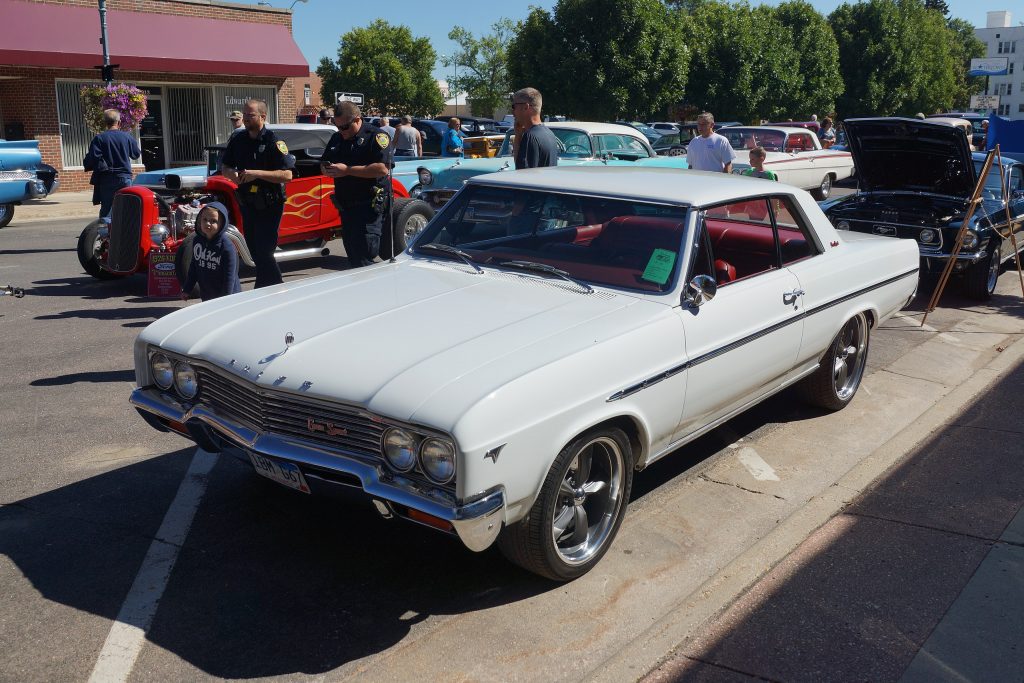
The first Gran Sport was an option package attached to both the 1965 Buick Skylark and Riviera. The best part of the package was its upgraded engine, the Nailhead V8. The Nailhead was a 401 cid V8 (officially marketed as a 400) that produced 325 horsepower and a solid 445 lb-ft of torque. It used a four-barrel Rochester or Carter carburetor, five-bolt mains, had a 10.25:1 compression ratio, dual exhausts, and hydraulic lifters.
Available transmissions were a fully-synchronized and floor-mounted three-speed manual, a four-speed manual, or the Super Turbine 300/400 automatics. The suspension gots upgraded with an anti-roll bar on the front and heavy duty suspension everywhere else to handle the increased power.
1966 Buick Skylark Gran Sport, Riviera Gran Sport, & Wildcat Gran Sport
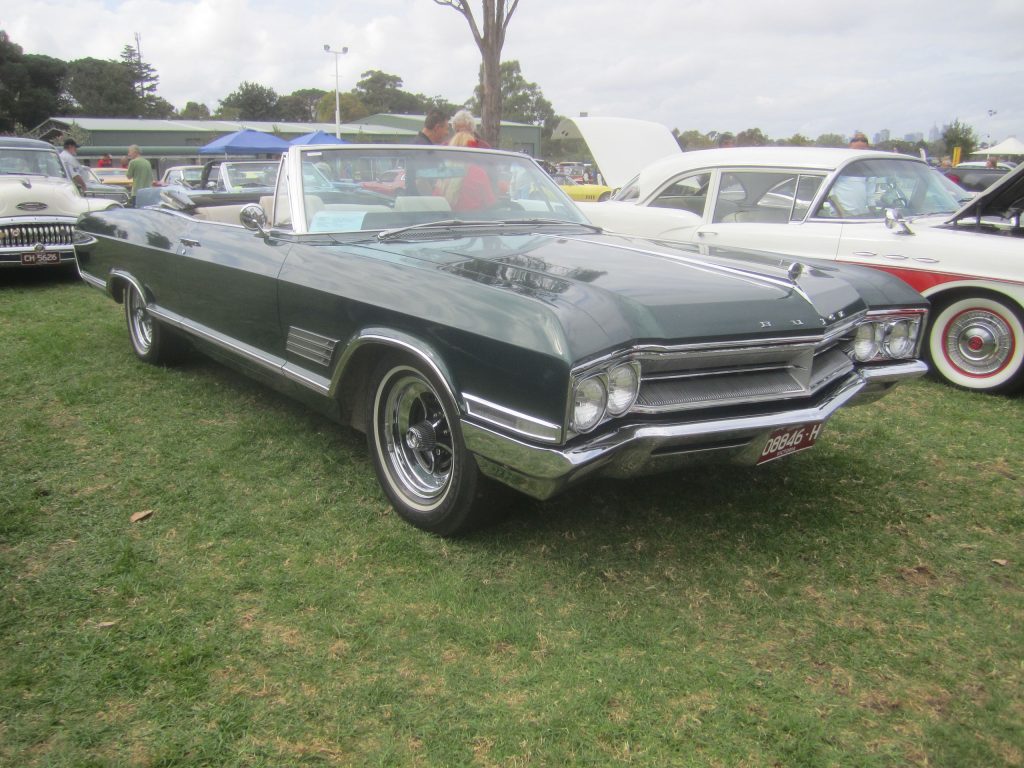
For 1966, Buick added the Gran Sport option to the Wildcat for one year only. On the Skylark, the Gran Sport package added a black matte rear cover panel, Skylark GS emblems and nameplates, fake air scoops, side strips, and an all-vinyl interior.
The standard engine was still the 325 horsepower Nailhead 400 V8, but a new Power Pack option emerged. The Power Pack version used a Rochester QuadraJet instead of a Carter AFB, and upped output to 340 horsepower. There was also a 332 horsepower version of the Nailhead, which had 11.0:1 compression and 450 lb-ft of torque.
For 1966 Wildcat Gran Sport buyers – the only year it was available on that model — there was also a 360 horsepower version of the Nailhead, nicknamed the Wildcat 465. This used dual Carter AFB quad-barrel carbs put together, but only 21 of them are known to have had the optional dual-quad version installed.
1967 Buick Skylark GS 340 & GS 400
For 1967, the Gran Sport remained an option for the Riviera, but became a standalone model within the Skylark line. Known as the Skylark GS 340 and GS 400, these monikers reflected the engine displacement each model used. The smaller GS 340 used a 340 V8 that made 260 horsepower and 365 lb-ft of torque through a “Carter four-barrel carb, five main bearings, deeper breathing manifolds, and hydraulic lifters.”
Inside the GS 400 was a new V8 that was actually 400 cid in displacement now instead of 401. It made 340 horsepower and was “a tuned, ticking machine that’s ready to move you into city traffic or pull you through a turnpike curve at the touch of your toe.” It had twin-hood scoops, rally stripes, a Rochester QuadraJet, hydraulic lifters, and a GS-400 emblem on the grille.
Suspension wise, the GS got sports car suspension, stiffer shocks, harder springs, aluminum front brake drums, and a heavy-duty front stabilizer bar.
1968 Buick GS 350, GS 400, & GS California
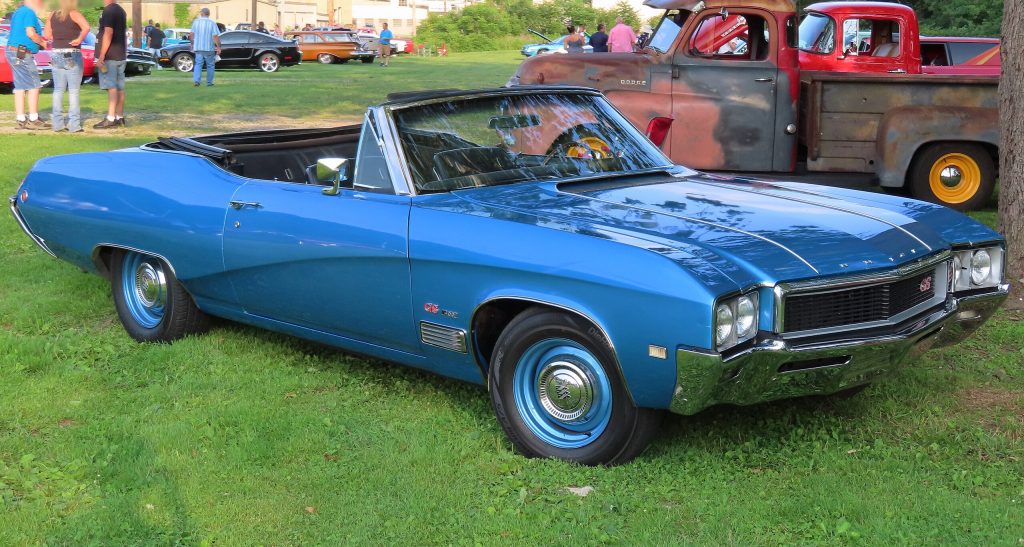
For 1968, the GS 340 became the GS 350 to reflect the new and slightly larger 350 V8 engine. This engine used a four-barrel carburetor, had 10.25:1 compression, and put out 280 horsepower. Compared with the standard Skylark, the GS 350 had finned simulated air intakes on the front fenders, side stripes; a GS 350 emblem on the deck lid, grille, and rear fenders; all-vinyl interior, and a hood scoop that concealed the wipers. The GS 400 had fake fender vents, real and functional hood scoops, optional bucket seats in the front, and GS 400 badging.
The GS 400 continued to use the same 340 horsepower 400 V8 from 1967, but also added a new Stage 1 option. This was not a factory option but was a dealership installed package, and was thus extremely rare. Extra goodies for the Stage 1 GS 400 included a high-lift camshaft, a bigger QuadraJet carburetor, larger dual exhausts, stiffer valve springs, improved oiling, a bigger fuel pump, and a new distributor.
Also new was the GS California, which was a version of the GS 350 that was only available for California buyers. The differences were vinyl roof covering, DeLuxe steering wheel, GS California emblems, and crank operated windows. There was also the GS Colorado, which was the same thing but sold exclusively in the Mile High state. The California/Colorado engine remained the same 350 V8 as in the standard GS 350.
1969 Buick GS 350, GS 400, & GS California
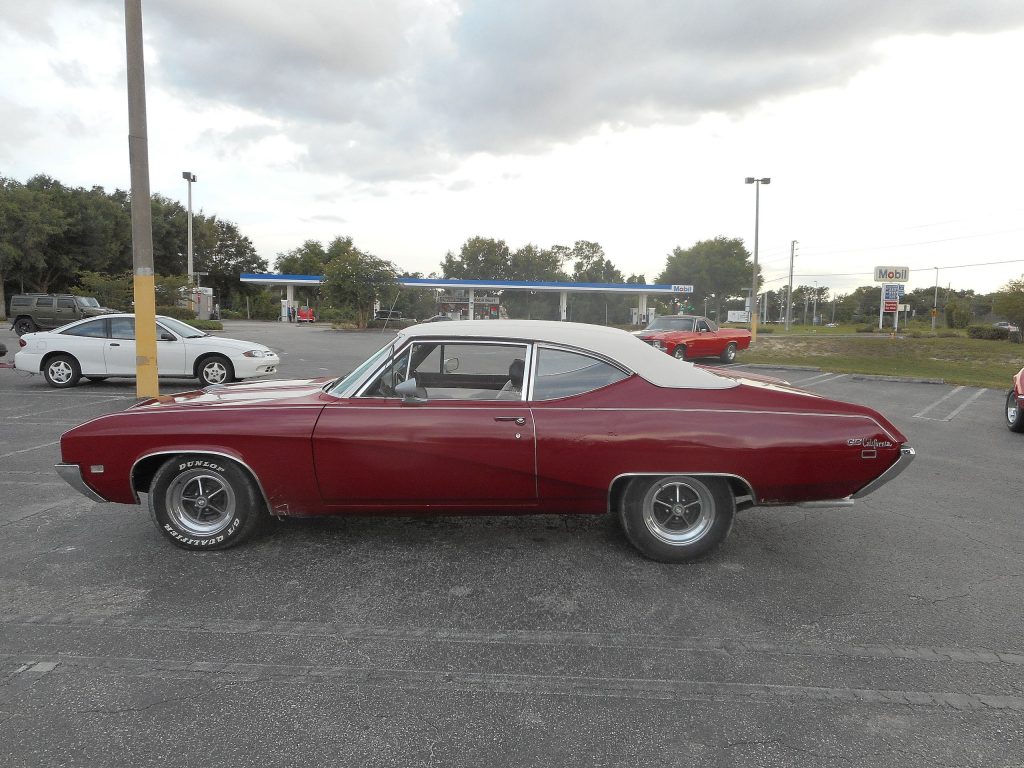
The 1969 Buick GS 350, GS 400, and GS California were all pretty much the same as the year prior. The Stage 1 GS 400 stayed the same at 345 horsepower (which was probably more like 390 horsepower in reality), but could not be ordered as a factory option instead of bought over-the-counter as a dealer option. This was also the last year for the GS California/Colorado.
1970 Buick Gran Sport 350 & Gran Sport 455
For 1970, the GS 350 returned, but the 350 V8 engine was now modified to produce 315 horsepower. This was the SP code 350, and was also the highest output Buick small-block V8 ever. The GS 400 disappeared, and Buick replaced it with the new GS 455. This reflected the use of the new Buick 455 V8, which pumped out an incredible 350 horsepower and 510 lb-ft from the factory. The GS 455 had functional hood scoops, chrome and red lower body, chrome wheels, and GS 455 emblems on the grille and fenders.
The GS 455 Stage 1 option returned and a new Stage 2 package became available. The 360 horsepower Stage 1 equipment included its own unique badging, a high-lift camshaft, bigger four-barrel carb, and low-restriction dual exhausts.
Buick planned to release Stage 2 like they did with Stage 1 as a factory option. However, the switch to unleaded gasoline and stricter emissions soured the project for Buick execs, and they canceled it. Still, they did make Stage 2 equipment available over the counter from dealers. Customers could either install it themselves or have capable dealers do so, and boy did it make a difference. Power output improved to an estimated 450+ horsepower and 500+ lb-ft of torque, though official numbers were never recorded.
Stage 2 meant an even hotter camshaft than Stage 1, high-flowing cylinder heads with larger valves, 12:1 forged pistons, an Edelbrock B4B intake manifold, Holley 850-cfm quad-barrel carb, Micky Thompson headers, and 4.78 differential gearing. The heads alone added 50 horsepower, and everything else was good for 100 total ponies more than stock. Stage 2 GS are incredibly rare, but also incredibly epic.
1970 Buick GSX
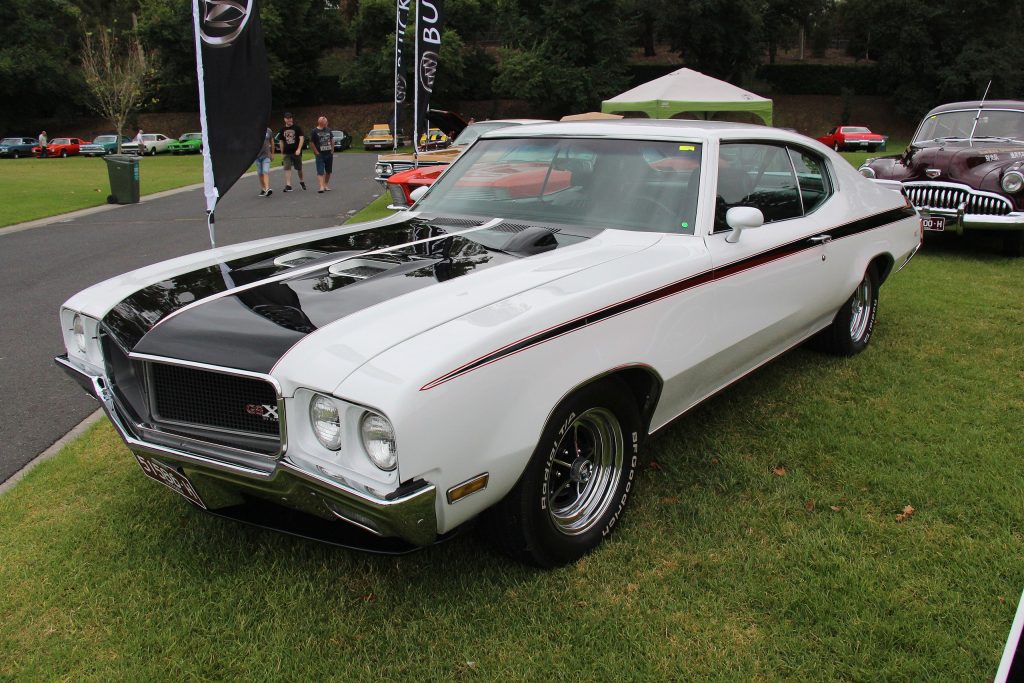
New for 1970 was the GSX version of the Gran Sport. The GSX had a hood-mounted tachometer, Rally steering wheel, GSX ornament and badging, outside sport mirrors, spoilers on both the front and rear, heavy-duty suspension, and power disc brakes in the front. It got the 350 horsepower 455 V8, and could be had with the optional Stage 1 or Stage 2 equipment. It was a $1,196 option, and was only available in Saturn Yellow or Apollo White.
1971 Buick GS 350, GS 455, & GSX
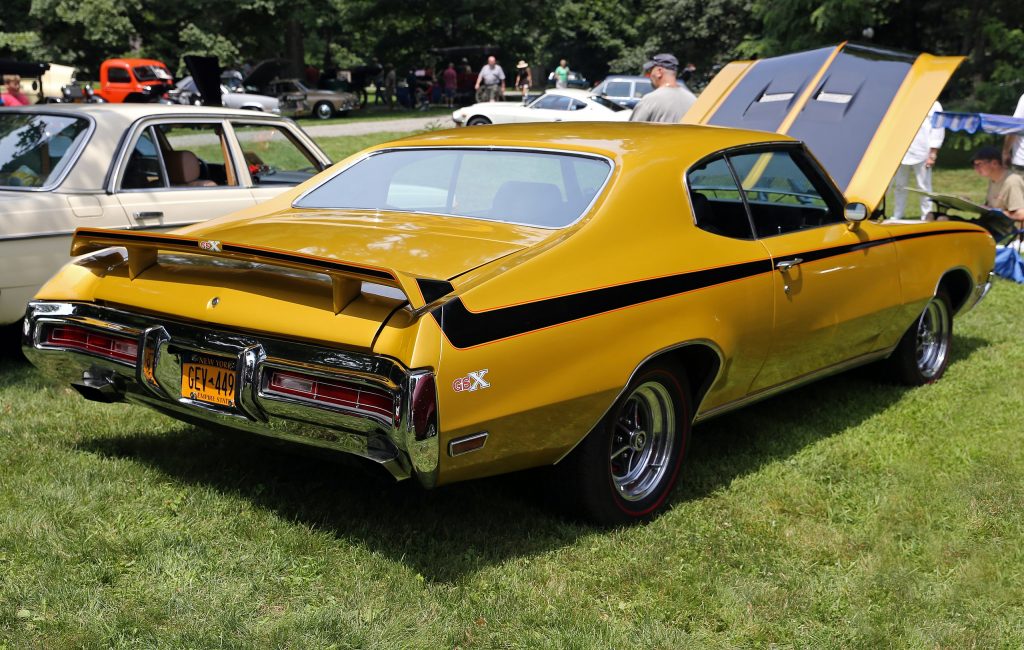
Everything returned from 1970 for 1971, except the Stage 2 parts from the dealers. Unfortunately, due to emissions restrictions, things started to get less powerful. Compression dropped on both the 350 and 455 V8s to 8.5:1, which lowered output to 260/315/345 horsepower in the GS 350/GS 455/GS 455 Stage 1 models. For the 1971 GSX, equipment included body side stripes, black hood panels, GSX emblems on the grille and fenders, hood-mounted tachometer, automatic climate control, Ralley steering wheel, rear spoiler, sport mirrors.
1972 Buick GS 350, GS 455, & GSX
Once again, the entire GS/GSX lineup rolled over again for 1972, and again it all was downgraded in power output. The 350 and 455 V8s continued to be the available engines, but they now made 190/225/270 horsepower in the GS 350/GS 455/GS 455 Stage 1 models. This reflected both a drop in performance and a switch to SAE Net horsepower ratings from SAE Gross. The new Net standards meant that Buick had to test their engines with accessories attached, which reduced output on paper, but more accurately reflected performance on the street.
This was the final year for the standalone GS and GSX series, as they reverted back to option packages from 1973-on.
1965–1972 Buick Gran Sport & GS Engines
| Model Year | Engine | Horsepower | Torque |
|---|---|---|---|
| 1965-1966 | 401 V8 (4bbl) | 325 horsepower | 445 lb-ft |
| 1966 | 401 V8 (4bbl) | 332 horsepower | 450 lb-ft |
| 1966 | 401 V8 (4bbl) | 340 horsepower | 445 lb-ft |
| 1966 | 401 V8 (2x4bbl) | 360 horsepower | 465 lb-ft |
| 1967 | 340 V8 (4bbl) | 260 horsepower | 365 lb-ft |
| 1967-1969 | 400 V8 (4bbl) | 340 horsepower | 440 lb-ft |
| 1968-1969 | 350 V8 (4bbl) | 280 horsepower | 375 lb-ft |
| 1968-1969 | 400 V8 (4bbl) (Stage 1) | 345 horsepower | 440 lb-ft |
| 1970 | 350 V8 (4bbl) | 315 horsepower | 410 lb-ft |
| 1970 | 455 V8 (4bbl) | 350 horsepower | 510 lb-ft |
| 1970 | 455 V8 (4bbl) (Stage 1) | 360 horsepower | 510 lb-ft |
| 1970 | 455 V8 (4bbl) (Stage 2) | 450+ horsepower | 500+ lb-ft |
| 1971 | 350 V8 (4bbl) | 260 horsepower | 360 lb-ft |
| 1971 | 455 V8 (4bbl) | 315 horsepower | 450 lb-ft |
| 1971 | 455 V8 (4bbl) (Stage 1) | 345 horsepower | 460 lb-ft |
| 1972 | 350 V8 (4bbl) | 190 horsepower | 285 lb-ft |
| 1972 | 455 V8 (4bbl) | 225 horsepower | 360 lb-ft |
| 1972 | 455 V8 (4bbl) (Stage 1) | 270 horsepower | 390 lb-ft |
1965–1972 Buick Gran Sport & GS Production Numbers
| Model Year | Bodystyle | Production Total |
| 1965 | Skylark Gran Sport Sedan | 2,282 |
| Skylark Gran Sport Hardtop | 11,351 | |
| Skylark Gran Sport Convertible | 2,147 | |
| 1965 Total | 15,780 | |
| 1966 | Skylark Gran Sport Sedan | 1,835 |
| Skylark Gran Sport Hardtop | 9,934 | |
| Skylark Gran Sport Convertible | 2,047 | |
| 1966 Total | 13,816 | |
| 1967 | GS 340 | 3,692 |
| GS 400 Sedan | 1,014 | |
| GS 400 Hardtop | 10,659 | |
| GS 400 Convertible | 2,140 | |
| GS California 340 | 1,577 | |
| 1967 Total | 19,082 | |
| 1968 | GS California | 4,831 |
| GS 350 Hardtop | 8,317 | |
| GS 400 Hardtop | 10,743 | |
| GS 400 Convertible | 2,454 | |
| 1968 Total | 26,345 | |
| 1969 | GS California | 3,574 |
| GS 350 Hardtop | 6,305 | |
| GS 400 Hardtop | 6,346 | |
| GS 400 Hardtop Stage 1 | 1,256 | |
| GS 400 Convertible | 1,564 | |
| GS 400 Convertible Stage 1 | 212 | |
| 1969 Total | 19,257 | |
| 1970 | GS 350 Hardtop | 9,948 |
| GS 455 Hardtop | 5,589 | |
| GS 455 Hardtop Stage 1 | 2,465 | |
| GSX | 278 | |
| GSX Stage 1 | 400 | |
| GS 455 Convertible | 1,184 | |
| GS 455 Convertible Stage 1 | 232 | |
| 1970 Total | 20,096 | |
| 1971 | GS 350 Hardtop | 5,986 |
| GS 455 Hardtop | 1,481 | |
| GS 455 Hardtop Stage 1 | 801 | |
| GSX | 124 | |
| GS 350 Convertible | 656 | |
| GS 455 Convertible | 165 | |
| GS 455 Convertible Stage 1 | 81 | |
| 1971 Total | 9,294 | |
| 1972 | GS 350 Hardtop | 5,896 |
| GS 455 Hardtop | 1,099 | |
| GS 455 Hardtop Stage 1 | 728 | |
| GSX | 44 | |
| GS 350 Convertible | 645 | |
| GS 455 Convertible | 126 | |
| GS 455 Convertible Stage 1 | 81 | |
| 1972 Total | 8,619 |
1973+ Buick Gran Sport & Buick Regal GSX
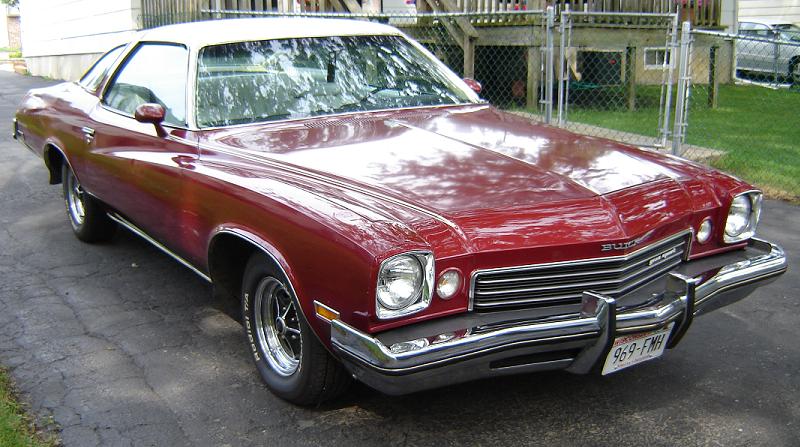
After 1972, the Gran Sport reverted back to being just an option package like it was from 1965–1966. The Riviera GS was still available through 1975, and from 1973–1975 and 1986 there was also the Century GS. In addition, there was also a GSX package for the 1974 Apollo, but it only lasted one year.
From 1988–2004, and again from 2010–2020, Buick brought out the GS badging once again for the Regal. The 1997–2004 Regal GS used a supercharged 3.8 liter V6 capable of 250 horsepower. On the other hand, the 2003–2004 Regal GSX was made through a collaboration between Buick and SLP Performance, who were also known for their various Pontiac Firebird special variants.
As a throwback to the original GSX, you could get a Stage 1, Stage 2, and Stage 3 package for the SLP/Buick GSX. Stage 1 added 10 horsepower through an upgraded intake and exhaust, and Stage 2 added 20 horsepower through a new tuning calibration from SLP. For Stage 3 customers, they also got a smaller supercharger pulley, and gained 30 horsepower over stock for 270 horsepower and 312 lb-ft of torque total.
As of 2024, Buick has not returned the GS or GSX monikers on any of their lines. Hopefully, in the future they will resurrect them with a new luxury modern muscle car for the ages.
Buick Gran Sport & GS FAQ
Yes, the Buick Gran Sport and GS both refer to the same vehicle. From 1967–1972, Buick made the Gran Sport a standalone vehicle within the Buick Skylark line. It had a larger engine, better suspension, and specific badging.
Stage 1 referred to a set of upgrades for the GS 455 from 1968–1972. It featured a more aggressive camshaft, bigger carburetor, and other improvements, to boost horsepower over the standard GS 455.
The Buick Stage 2 GS was a planned factory option for the 1970 Buick GS 455 that never panned out. It consisted of a 450+ horsepower version of the Buick 455 V8, but never officially released. However, buyers could still get the Stage 2 parts from certain dealers and install them, to have unofficial Stage 2 Gran sports.

